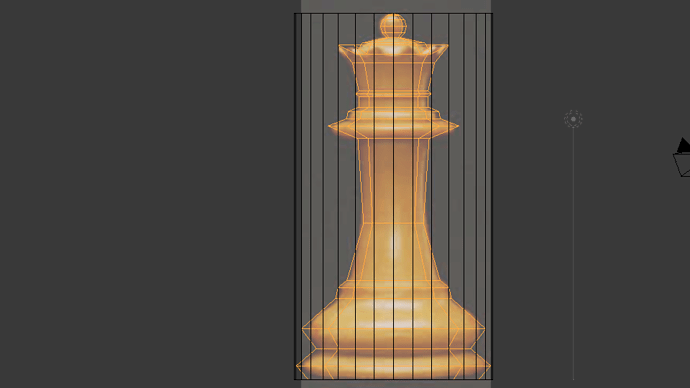So here’s my queen (that is, the chess piece, not my actual queen  )
)
Except from the fact that tris/quads/ngons were introduced, I did not have the impression that there was much to learn in this lecture though. It would have been nice to see more hands-on examples of what benefits and problems can be when using either of these primitives.
So I modeled this queen as we did for other models before, extruding and scaling (and the occasional inset). By the way, I did model the small ridge under the crown, and added an edge loop in the middle for the curvature (as it felt more appropriate to me). For the top (from spikes to the “bulb”), I immediately did “inset” followed by pulling down. In the lecture they did “inset”, “extrude down” and later on the edges were merged again, in the end obtaining the same result. If in the end some thickness was preferred, I could just have added an edge loop and pulled that up to the correct height … So I guess either approach was OK, but given the end result I was lucky to have the more straightforward approach.
For the ball, I modeled it as I did before: UV-sphere with the correct amount of rings (not as a separate object, just immediately put it correctly in edit mode), removed the bottom vertex and bridge edge loops (or you can scale the top of the queen such that the vertices coincide, and then remove doubles). I understand that the boolean is also a useful approach, but in cases where you can do it exactly, I prefer to do so (the sphere perfectly fits on the top of the queen). I tested this, and if the sphere is positioned correctly, the topology looks OK (i.e., quads) … However, if you are sloppy, you get:
In light of the course “tris/quads/ngons” I guess this could have been interesting to mention  Maybe this is a general issue with boolean operators, that topology “tris/quads/ngons” are not that straightforward if you are not careful?
Maybe this is a general issue with boolean operators, that topology “tris/quads/ngons” are not that straightforward if you are not careful?


